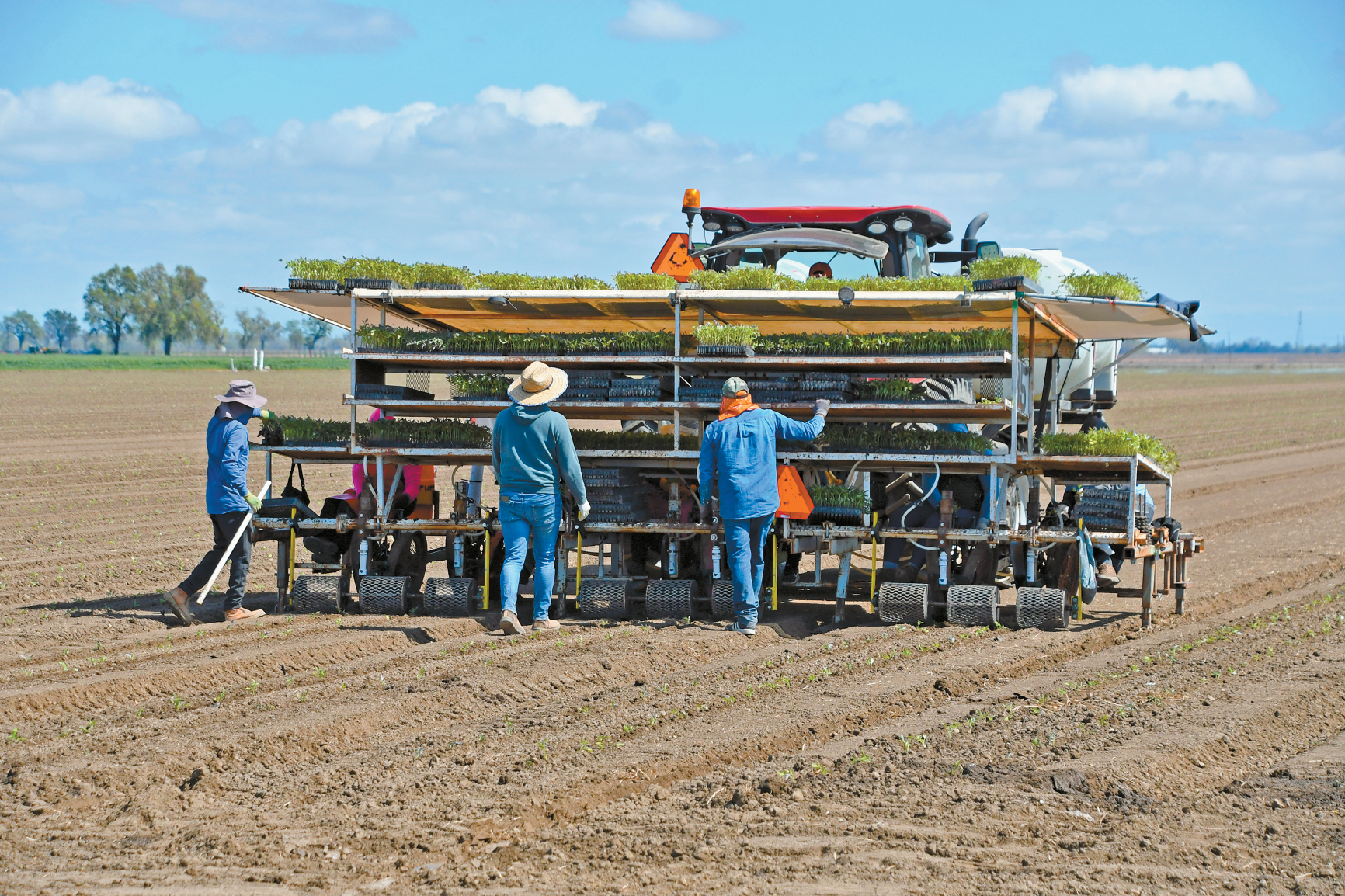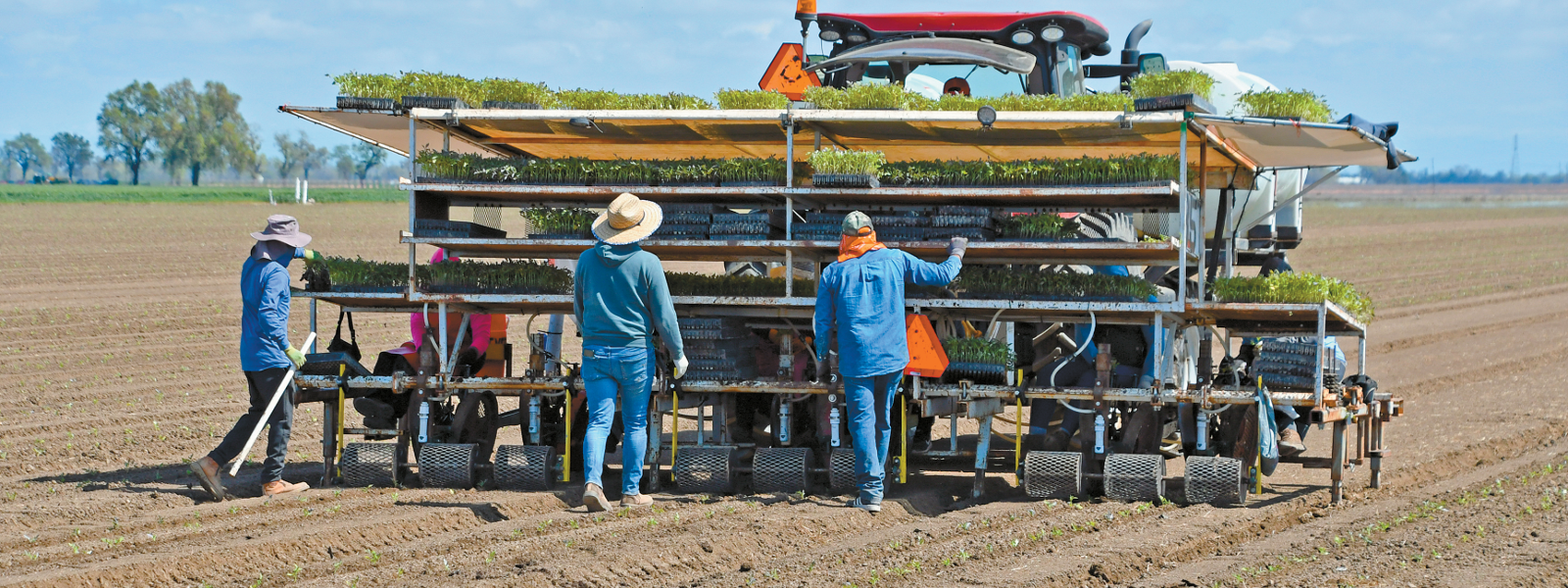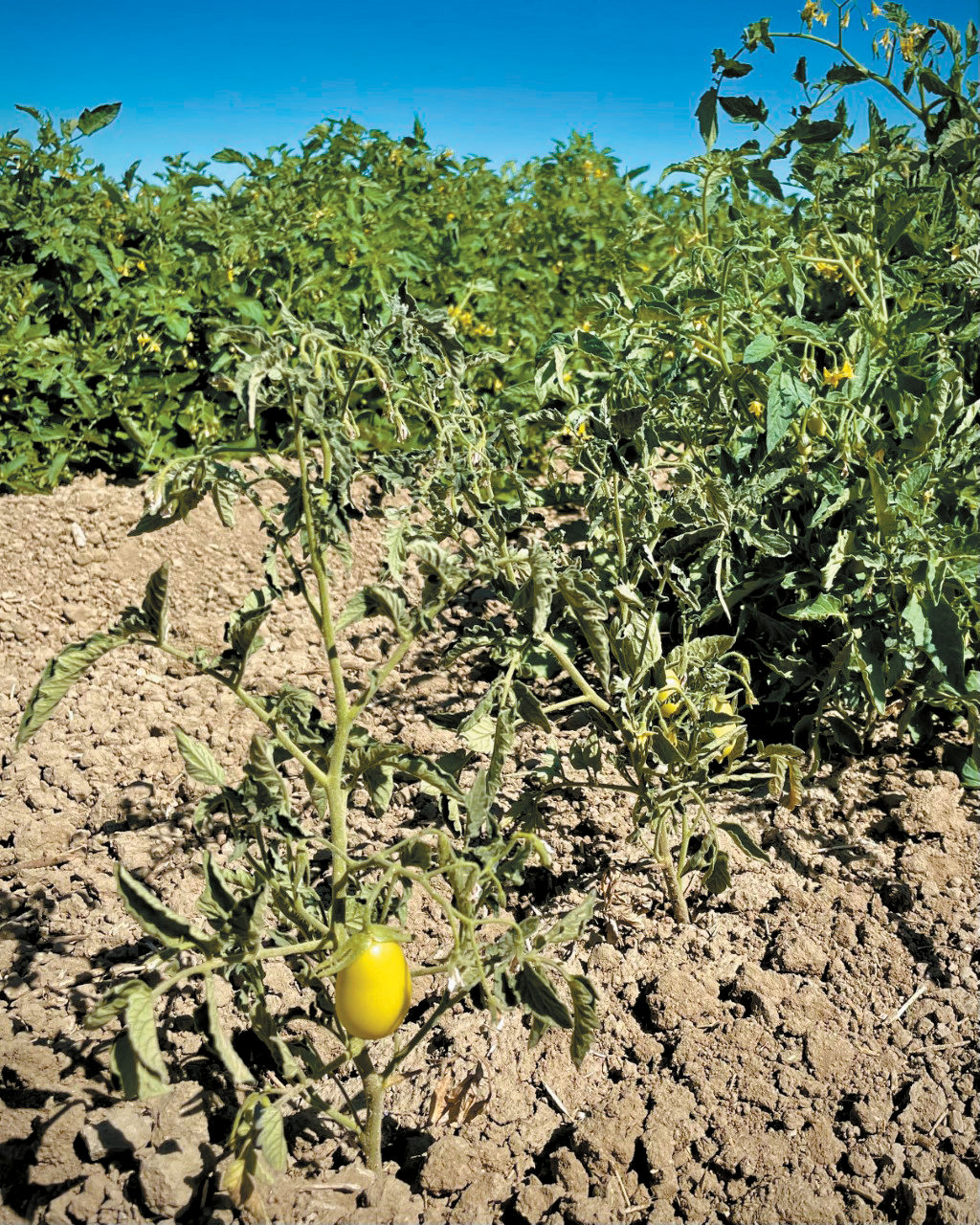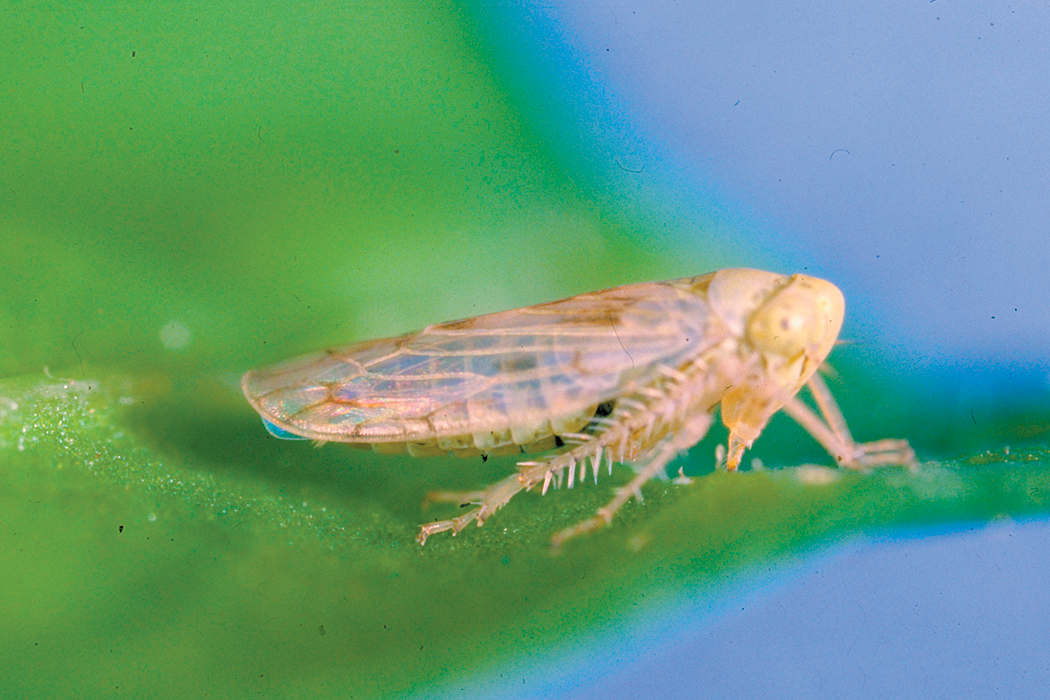Processing tomato pest triggers county emergencies

Emergency declarations in several counties in the San Joaquin Valley have allowed processing tomato growers to use neonicotinoid pesticides to treat fields impacted by sugar beet leafhoppers. The insect pest transmits beet curly top virus, which leads to reduced yields. County agricultural commissioners made the declarations preemptively to contain the pest before it damaged too many crops.
Photo/Vicky Boyd


Photo/Regents of University of California

Photo/A.C. Magyarosy/Bugwood.org
By Vicky Boyd
In a preemptive move this spring, several county agricultural commissioners sought emergency declarations for a processing tomato pest so growers could have in-season access to popular neonicotinoid insecticides.
Had they waited for the sugar beet leafhopper to show up in San Joaquin Valley processing tomato fields, it would have likely been too late to begin the emergency declaration process, said Stanislaus County Agricultural Commissioner Linda Pinfold.
“We know every year we have the beet leafhopper, and as things warm up, they come down from the hills and migrate into the valley,” she said of the pest, which spreads beet curly top virus, a disease known to cause serious crop damage. “The tomato plants, especially from the moment they’re planted to when they fill out fruit, are the most susceptible.”
She said the county declaration was needed “so that the growers can have the tools available to them if and when they detect beet leafhopper that’s migrated in.”
Stanislaus County farmer Daniel Bays, who grows a mix of tree and row crops, including processing tomatoes near Westley, said having neonicotinoids available for in-season leafhopper control was a relief.
“So much of it is we don’t know for sure,” he said. “If we need it or have to use it, by the time we see leafhoppers becoming an issue, we don’t have two to three weeks to go through the (emergency declaration) process. We need to take care of it now.”
In late May, Bays said he had begun to see a few leafhoppers moving into his tomato fields near the coastal foothills. He typically looks to Fresno and Kern counties as predictors of what might occur in his area because they tend to be a few weeks ahead on leafhopper migration.
“They’ve been seeing more leafhoppers down there, so we know it’s only a matter of time before we’ll be seeing more,” he said.
The emergency declaration requests, which were approved by boards of supervisors in Kern, Fresno, Kings, Madera, Merced and Stanislaus counties, apply only to use of neonicotinoids on processing tomatoes for beet leafhoppers.
Growers must first obtain a pest control advisor recommendation for the pesticide’s use, follow label instructions and visit the BeeWhere beehive location website or survey for nearby bees, Pinfold said. The declarations expire 60 days after approval.
Until this year, processing tomato growers could use neonicotinoid insecticides in-season to manage beet leafhoppers as long as they followed the product label. On Jan. 1, the California Department of Pesticide Regulation significantly restricted use of four neonicotinoids on a wide variety of crops as part of pollinator protection measures.
For processing tomatoes, growers could make applications only from preplant until bloom. But the new restrictions allow neonicotinoid applications past that timeframe for a local emergency or to control a quarantine pest.
The cause for concern is the 0.13-inch-long beet leafhopper can transmit beet curly top virus, which may kill young tomato plants. In older plants, it may distort and discolor leaves, stunt growth and reduce fruit yield and quality.
Depending on the weather and leafhopper pressure, the effectiveness of an early season neonicotinoid application may wane two to three weeks after transplanting tomatoes into a field, said University of California Cooperative Extension vegetable crop advisor Tom Turini, who serves Fresno County. This may leave the plants at risk later in the season should infected beet leafhoppers migrate into the area.
Based on results of ongoing field trials of alternative insecticides at the UC West Side Research and Extension Center, he said neonicotinoids are the most effective products at preventing leafhopper feeding and thus virus infection. Scott Stoddard, UCCE vegetable farm advisor for Merced and Madera counties, is conducting similar trials this season.
Turini works closely with area pest control advisors to collect and submit leafhopper samples to UC Davis plant pathology professor Bob Gilbertson for virus testing. He also submits weed samples from the valley floor for testing, since numerous asymptomatic weeds may still be infected.
As of late May, the percentage of infected leafhoppers has remained relatively low, while a larger percentage of weeds such as goosefoot and lambsquarter has come back positive for curly top virus, Gilbertson said.
Based on this year’s results, Turini described the tomato curly top risk as mild to moderate.
“Usually, the hills will dry much earlier than they did this year, so we did see the increase in beet leafhopper later than we usually do,” he said. “We have generations of leafhoppers on the valley floor, and we know (the virus) is in the weeds, and we can expect those populations to move.”
Turini said last month, “I think there’s a risk as we get further into the season because there are still tomatoes going in at the end of May right now.”
Beet leafhoppers overwinter in the coastal foothills, where they likely pick up beet curly top virus by feeding on infected weeds. As the foothills dry in the spring, the insects migrate into the San Joaquin Valley looking for green plants on which to feed.
The insect pest has a wide host range, including numerous weeds. In fact, tomatoes aren’t even a preferred food. As they probe to taste tomato plants, the insects may inject virus and infect them before flying off to other plants or crops.
Historically, severe curly top virus outbreaks have occurred in processing tomatoes when both leafhopper populations and the percentage of infected leafhoppers are high, Gilbertson said. This occurred in 2006 and 2013.
Although beet curly top disease outbreaks are unpredictable, he said he expects 2024 to be a relatively low disease year based on high winter leafhopper mortality from wet weather, foothills leafhopper sampling data and virus testing results to date. Nevertheless, some fields, particularly along the west side of the San Joaquin Valley, may become infected, he added.
“From western Fresno and Kings down into Kern and maybe into southern Merced County historically have been our greatest challenges,” Turini said. “Even in a mild to moderate year, you can still have fields that have damage.”
(Vicky Boyd is a reporter in Modesto. She may be contacted at vlboyd@att.net.)




